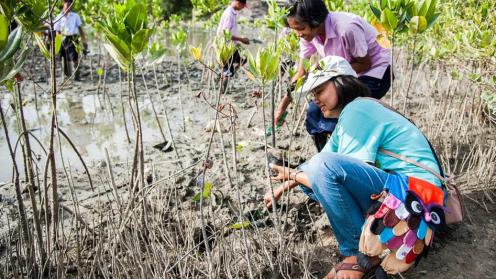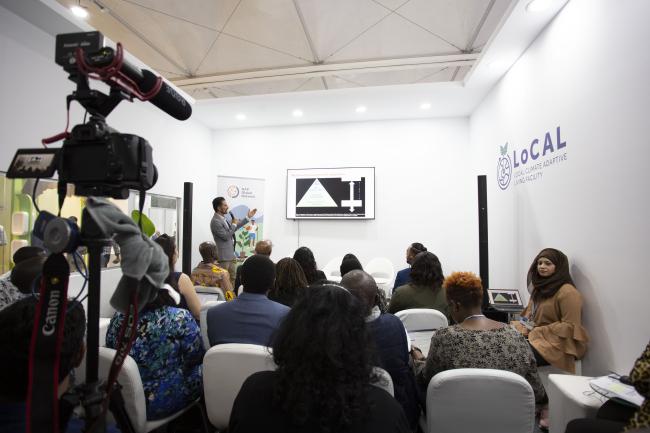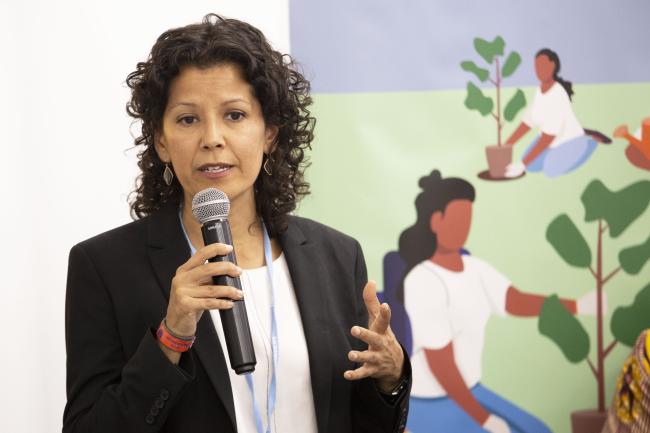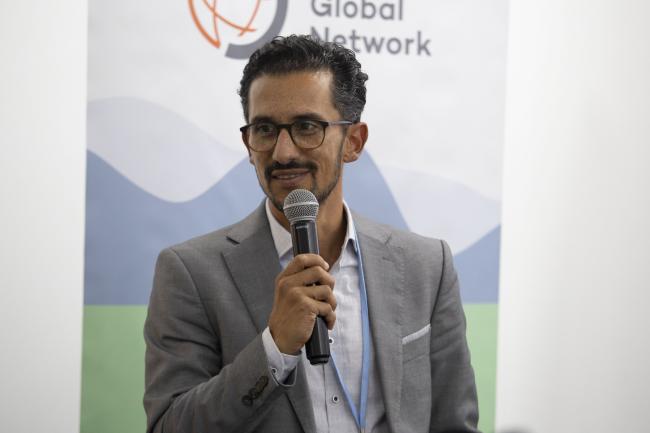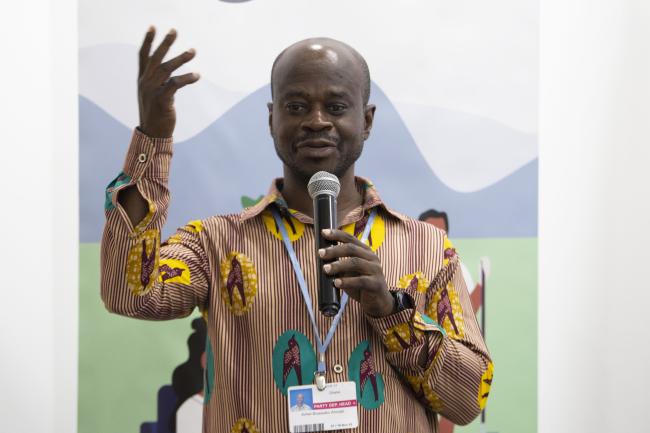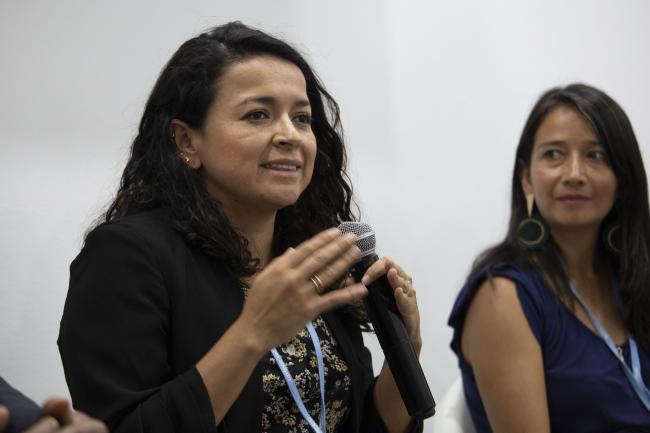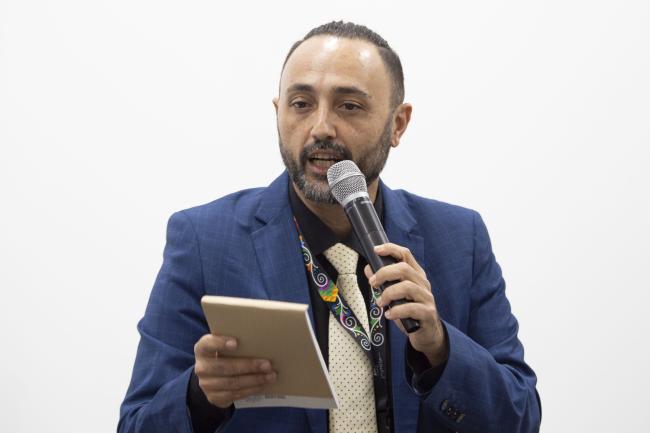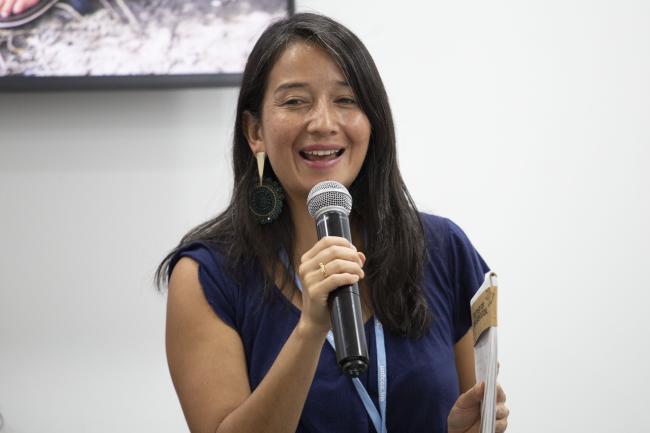About
Representatives from Africa and Latin America shared their diverse experience with local adaptation planning and implementation in a side event that asked: How can multilevel governance act as a catalyst for adaptation finance at the local level?
While tools such as National Adaptation Plans (NAP) are formulated by national actors, their effectiveness and implementation depend on finance also reaching subnational levels of governance and local projects. How can multilevel governance act as a catalyst for adaptation finance at the local level? This event showcased lessons learned and best practices in creating strategic links to NAP processes that present an opportunity to establish mechanisms for channeling finance to local levels. Representatives from Africa and Latin America, in particular, shared their diverse experience with local adaptation planning and implementation.
In her welcome remarks, Anne Hammill, NAP Global Network Secretariat, International Institute for Sustainable Development (IISD), described the NAP Global Network’s three key areas of work: short and long-term technical support for countries; South-South peer learning and exchange; and knowledge mobilization, which includes the NAP Trends, a platform that provides summaries of the information in NAP documents, as well as analyses of trends across countries. She stressed that local and national adaptation strategies should be aligned.
Mauricio Luna-Rodríguez, NAP Global Network, IISD, explained that multilevel governance recognizes the contributions of various levels of government, the private sector, and civil society. He sketched the multilevel governance of adaptation efforts, which ranges from local projects and interventions to the Global Stocktake, a component of the Paris Agreement. Citing findings from NAP Trends, he said: 95% of the 37 submitted NAPs mention sub-national actors; 32% mention mechanisms for vertical integration; and 70% mention either local and/or community action. Finally, he reviewed the eight Principles for Locally Led Adaptation (LLA), noting the event’s discussions would address four of them.
Luna-Rodríguez then turned to country representatives for a first round of questions on multilevel frameworks that exist in their countries and direct the flow of adaptation finance to the local level. Iván Alonso Delgado Pitti, Ministry of Environment and Energy, Costa Rica, said his country was vulnerable to extreme weather events, noting USD 300 million were lost annually to climate change. He highlighted the need to have enough data on climate-related damages for sound decision-making, including as part of NAP processes, and for those managing financing to be held accountable.
Antwi-Boasiako Amoah, Environmental Protection Agency, Ghana, described the flow of finance in his country, explaining the role of national, municipal, and metropolitan assemblies in allocating these funds. Each assembly, he explained, has funds it can allocate to projects on the ground, which are complemented by, among others, multi-donor-led interventions that go to the local level. María del Pilar Restrepo, National Planning Department, Colombia, described the institutional architecture of adaptation financing in her country highlighting efforts to collaboratively identify the areas that require attention and to identify sources of funding, including from the private sector.
On the process leading to the country’s NAP, to be released in December 2022, Rosa Ana González, Ministry of the Environment, Water and Ecological Transition, Ecuador, said it contributed to strengthening the planification of adaptation across the country. She said the national government hoped to work with the country’s three sub-national levels of government, namely the provincial, cantonal, and municipal levels, as “partners.” This would require capacity-building, she continued, as these often have smaller teams who, furthermore, are focused on multiple themes. Malik Aman, Financing Locally-Led Climate Action (FLLoCa) Programme, Kenya, said FLLoCA, which is government-led, plans to strengthen local climate action over the 2020-2030 timeframe. He highlighted that participatory climate risk assessment is at the heart of climate adaptation in Kenya: “The communities are best placed to determine what they need, where the problems are. It gives communities ownership,” he concluded.
In a second round of questions about bottlenecks identified and what their “birthday wish” would be to improve the flow of climate adaptation finance towards the local level, Amoah noted the need to improve the capacity of local actors to mobilize resources, an issue that most other panelists reiterated. Delgado Pitti highlighted, among others, the need for better data on climate adaptation. Restrepo said that in Colombia, lack of capacity from local-level actors to formulate projects that could be financed prevents them from accessing national public funding or private sector investment. González described a country-wide evaluation on the adaptation capacity of decentralized governments, which produced a “resilience model” on which these are now measured. For all of these to comply with this model, she added, would be her “wishlist.” Aman said he wished for better financial flows from existing government structures, saying that bottlenecks come from short-term thinking by politicians and businesses.
The event concluded with questions from the audience on themes such as the challenges of formulating “big” projects at the local level that could qualify for financing and how to promote accountability in actors managing adaptation financing.
Organizer: NAP Global Network Secretariat
Contact: Mauricio Luna Rodríguez | mluna@iisd.org
For more information: https://napglobalnetwork.org/
To receive free coverage of global environmental events delivered to your inbox, subscribe to the ENB Update newsletter.
Questions and Answers with the Audience

Antwi-Boasiako Amoah, Environmental Protection Agency, Ghana; Malik Aman, FLLoCA; Rosa Ana González, Ministry of the Environment, Water and Ecological Transition, Ecuador; María del Pilar Restrepo, National Planning Department, Colombia; and Iván Delgado Pitti, Ministry of Environment and Energy, Costa Rica
